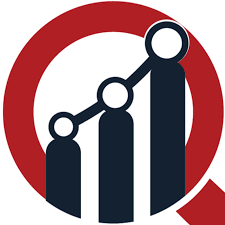The Enterprise IoT (Internet of Things) Market is set to redefine business infrastructure, workflows, and decision-making by 2035. As industries become increasingly digital and decentralized, Enterprise IoT will serve as the central nervous system—connecting machines, assets, employees, and environments in real time. With edge AI, 6G, and autonomous systems on the rise, IoT will be foundational to achieving operational excellence, resilience, and agility across sectors.
Key Market Drivers and Trends by 2035
Edge Computing and Real-Time Intelligence
Enterprises will shift toward distributed edge computing, enabling IoT devices to process and analyze data locally. This will reduce latency, enhance security, and allow instant, autonomous decisions in manufacturing, logistics, and energy grids.
AI and Predictive Analytics at Scale
IoT platforms will be deeply embedded with AI/ML models that predict failures, optimize performance, and automate workflows. Predictive maintenance, real-time quality control, and dynamic supply chains will be standard across industries.
Cybersecurity and Zero-Trust Architecture
With billions of enterprise devices online, security will be mission-critical. IoT frameworks will implement hardware-level encryption, anomaly detection, and zero-trust protocols to prevent breaches and safeguard operations.
Interoperability Across Industries
By 2035, Enterprise IoT systems will be standardized across sectors—from smart factories and digital healthcare to intelligent logistics and green buildings. Open APIs and interoperability will be key for scalability and cross-sector collaboration.
Sustainability and ESG Intelligence
IoT sensors will help monitor emissions, energy use, waste management, and carbon footprints. Real-time ESG tracking will become a regulatory requirement, supported by IoT dashboards delivering transparent insights.
Regional Outlook and Expansion
-
North America will lead in advanced IoT platforms for manufacturing, retail, and energy.
-
Asia-Pacific will drive adoption in industrial automation, smart cities, and agriculture.
-
Europe will focus on secure, interoperable, and green-compliant IoT ecosystems.
Leading Players and Innovation Drivers
Top companies such as Cisco, IBM, Siemens, Microsoft Azure IoT, PTC, AWS, and Huawei will continue to evolve robust Enterprise IoT solutions. Startups will emerge with industry-specific platforms, edge-native hardware, and low-power connectivity tools tailored for enterprise scale.
Conclusion
By 2035, Enterprise IoT will be the invisible infrastructure that drives smart, autonomous, and sustainable business operations. With devices acting as both sensors and intelligent agents, the enterprise of the future will be data-rich, real-time, and infinitely scalable.

